Discover 11 hidden attractions, cool sights, and unusual things to do in Dunfermline (United Kingdom). Don't miss out on these must-see attractions: Dunfermline Abbey, Dunfermline Palace, and Andrew Carnegie Birthplace Museum. Also, be sure to include East End Park in your itinerary.
Below, you can find the list of the most amazing places you should visit in Dunfermline (Scotland).
Table of Contents
Dunfermline Abbey

Priory/abbey ruins and royal burial site. Dunfermline Abbey is a Church of Scotland Parish Church in Dunfermline, Fife, Scotland. The church occupies the site of the ancient chancel and transepts of a large medieval Benedictine abbey, which was sacked in 1560 during the Scottish Reformation and permitted to fall into disrepair. Part of the old abbey church continued in use at that time and some parts of the abbey infrastructure still remain. Dunfermline Abbey is one of Scotland's most important cultural sites.[1]
Dunfermline Palace

Palace in Rosyth, Scotland. Dunfermline Palace is a ruined former Scottish royal palace and important tourist attraction in Dunfermline, Fife, Scotland. It is currently, along with other buildings of the adjacent Dunfermline Abbey, under the care of Historic Environment Scotland as a scheduled monument.[2]
Address: St. Margaret Street, KY12 7PE Dunfermline
Andrew Carnegie Birthplace Museum
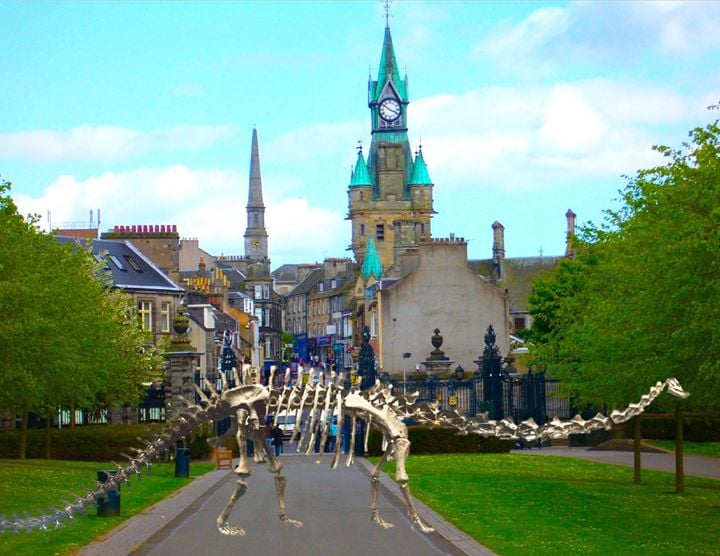
Museum in Dunfermline, Scotland. The Andrew Carnegie Birthplace Museum is a biographical museum in Dunfermline, Fife, Scotland, dedicated to the life of Scottish-American industrialist and philanthropist Andrew Carnegie, "one of the great Scots of the 19th century.". The museum is operated by the Carnegie Dunfermline Trust and is housed in a category B listed building. The museum site includes the original 18th-century weavers cottage in which Andrew Carnegie was born and a memorial hall added by James Shearer in 1928.
Andrew's wife, Louise Whitfield Carnegie, purchased the cottage in 1895 from William Templeman using a legacy bequeathed to her from her grandfather. Upon the creation of the Carnegie Dunfermline Trust in 1903 the cottage was looked after by the trust and opened to visitors in 1908.
In October 2019 the museum became the first Scottish institution to win the Family Friendly Museum Award.[3]
Address: Moodie St, KY12 7PL Dunfermline
East End Park
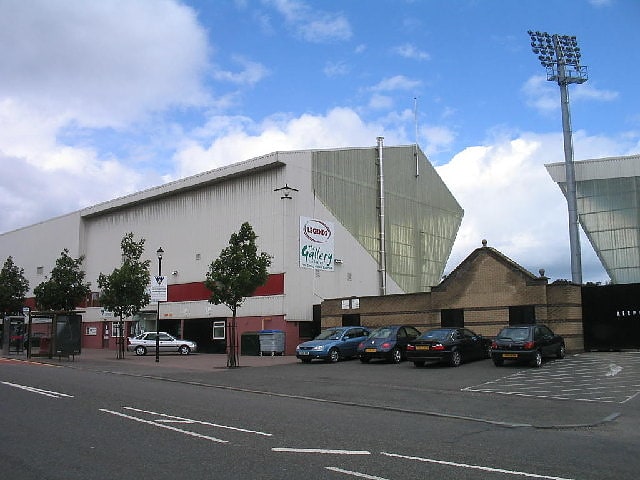
Stadium in Dunfermline, Scotland. East End Park is a football stadium situated in Dunfermline, Fife, Scotland with a seating capacity of 11,480.
The stadium plays host to the home matches of Scottish Championship side, Dunfermline Athletic The stadium currently comprises four stands: the East Stand (currently sponsored by SQMC), the Main Stand (currently sponsored by srj windows), the North Stand and the Norrie McCathie Stand. The stadium is all seater and has under-soil heating.[4]
Address: Halbeath Rd, KY12 7RB Dunfermline
Pittencrieff Park
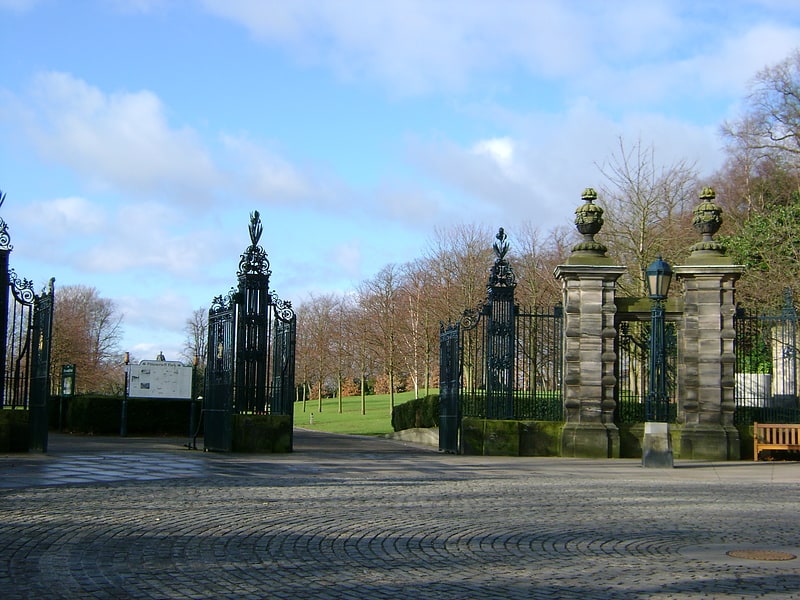
Park in Dunfermline, Scotland. Pittencrieff Park is a public park in Dunfermline, Fife, Scotland. It was purchased in 1902 by Andrew Carnegie, and given to the people of Dunfermline in a ceremony the following year. Its lands include the historically significant and topologically rugged glen which interrupts the centre of Dunfermline and, accordingly, part of the intention of the purchase was to carry out civic development of the area in a way which also respected its heritage. The project notably attracted the attention of the urban planner and educationalist, Patrick Geddes.
The glen is an area of topographical and historical significance to Dunfermline as the original site of Malcolm's Tower, the probable remains of which can be identified today on a strongly defendable outcrop of rock. To the eastern side of the park is Dunfermline Palace with Dunfermline Abbey and to the west it overlooks the village of Crossford.[5]
Address: Pittencrieff Park, KY12 8QH Dunfermline
Abbot House

Building in Dunfermline, Scotland. Abbot House is the oldest building in Dunfermline. Lying in the shadow of Dunfermline's great abbey church, the core of the building is 16th-century. A heritage centre until August 2015, the centre closed following failed attempts by Abbot House Heritage Centre Trust to find alternative funding.
In March 2016 it was announced that the Carnegie Dunfermline Trust had taken over ownership of Abbot House, and that they intend to re-open the building to the public. In November 2016 it was announced that Fire Station Creative had been earmarked as the preferred operator, although plans had yet to be finalised and no indication of a possible re-opening date was given. In May 2017 it was reported that a re-opened Abbot House would provide a cafe, restaurant, meeting rooms and suites, and that it was the intention to re-open the cafe "as soon as possible".
In July 2018 the Carnegie Dunfermline Trust provided an update which stated that 70% of the funding for reopening Abbot House had been secured.[6]
Address: Heritage Centre, Maygate, KY12 7NE Dunfermline
Carnegie Hall

Theatre in Dunfermline, Scotland. Carnegie Hall is an Art Deco theatre located in Dunfermline, Fife, Scotland. It was named after the industrialist and philanthropist Andrew Carnegie, who was born in Dunfermline. Designed by architects Muirhead and Rutherford, it was officially opened in 1937 and was designated a Category B listed building in 1993.
Billy Connolly recorded his 1976 album Atlantic Bridge at both at the Dunfermline theatre and at Carnegie Hall in New York.
The Music Institute, which is adjoined to Carnegie Hall, was once called Benachie House and was converted into the institute between 1933 and 1937. The original house dates from around 1865.[7]
Address: East Port, KY12 7JA Dunfermline
Scottish Vintage Bus Museum
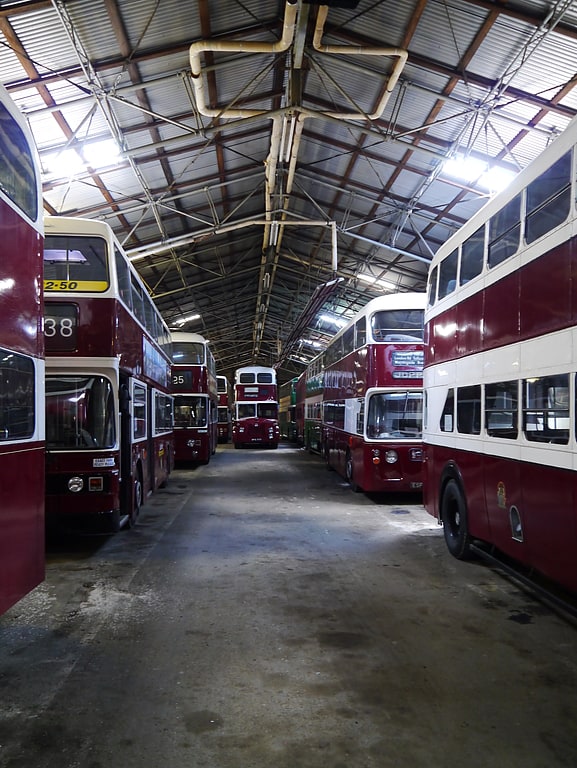
Museum in Scotland. The Scottish Vintage Bus Museum is a transport museum in Lathalmond, 2.5 miles north of Dunfermline, Fife. The museum is open every Sunday between Easter and the start of October.[8]
Address: M90 Commerce Park, KY12 0SJ Fife
Viewfield Baptist Church
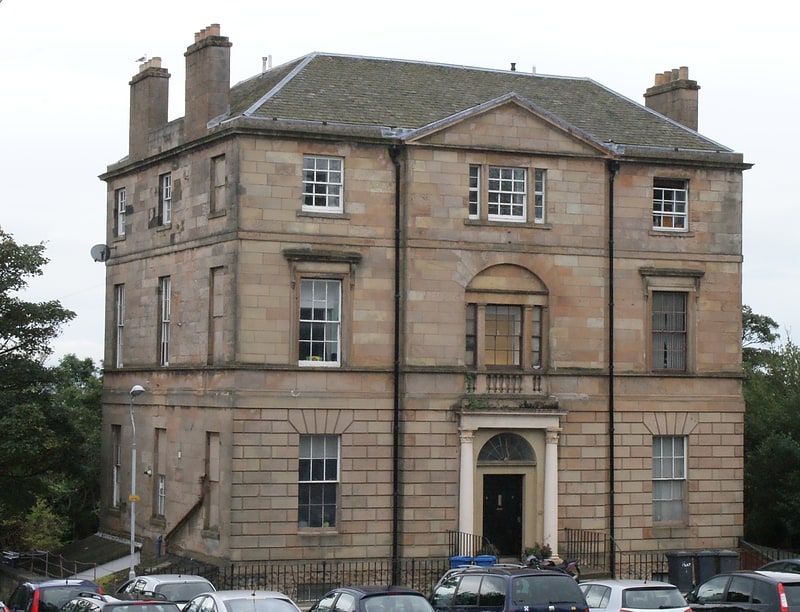
Viewfield House is a large square stone built three storey Palladian villa in Dunfermline, Fife, Scotland. It is a category B listed building.[9]
Address: East Port, Dunfermline
Dunfermline Carnegie Library
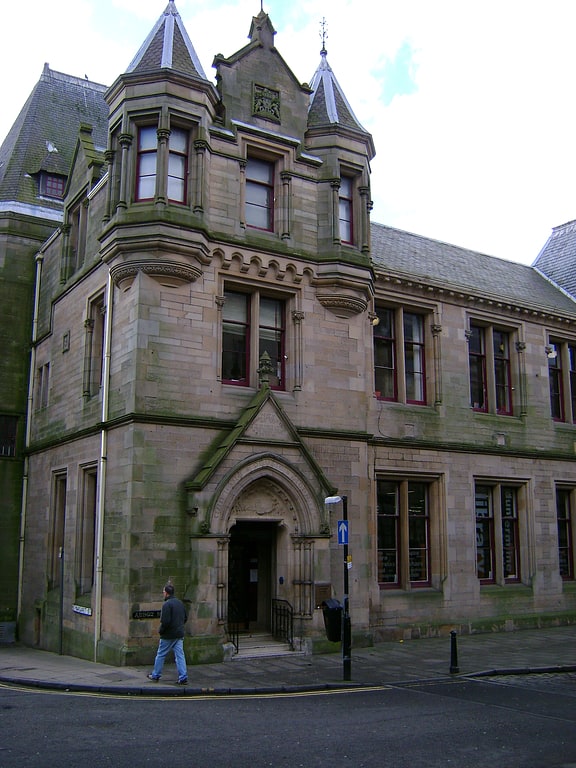
Library in Dunfermline, Scotland. The Dunfermline Carnegie Library was opened on 29 August 1883 and was the world's first Carnegie Library funded by the Scottish-American businessman and philanthropist Andrew Carnegie. It was designed by Edinburgh architect James Campbell Walker who also designed the nearby Dunfermline City Chambers. Andrew Carnegie donated £8000 to building and stocking what would be the first of over 2,500 Carnegie Libraries. The library was made a Category B listed building in 1971.[10]
Address: Central Library 1-7 Abbot Street, KY12 7NL Dunfermline
Malcolm's Tower

Malcolm's Tower, also known as Malcolm Canmore's Tower, is a historic site in the Scottish town of Dunfermline, Fife. It consists of the foundations of a rubble built, rectangular tower enclosed by an oval shaped modern wall and is protected as a scheduled monument. It is located in Pittencrieff Park.
The tower stood on a highly defensible peninsular outcrop of rock above a deep ravine and is the site from which the city derives its name. It was effectively the seat of royal power in Scotland after Malcolm III of Scotland shifted the centre of government from Forteviot to Dunfermline in the mid 11th century. The site was also close to a religious centre which had begun as a Culdee establishment in the 9th century. The first mention of the tower in the historical record is from 1070 when Malcolm III married his queen, Princess Margaret. As queen, Margaret introduced innovations which changed the course and identity of the Church in Scotland. Not far to the east of the tower's location are the remains of Dunfermline Abbey and later royal palace.
All that survives of the tower today are foundational fragments of wall, but an image of the building was adopted at an early date as the burgh arms for Dunfermline. Old wax seals suggest it to have been a building of two storeys with an attic. It might have contained around twenty small apartments. Before the western access road to Dunfermline was built, Malcolm's Tower would have been an almost impregnable fortress, perhaps rather like a broch, and this almost certainly explains Dunfermline's motto Esto rupes inaccessa (Be an inaccessible rock).
The opening lines of the traditional "Ballad of Sir Patrick Spens" are thought to refer to the tower:
The King sits in Dunfermling Toun Drynking the bluid-red wyne …[11]